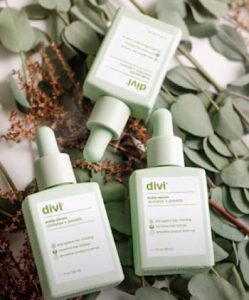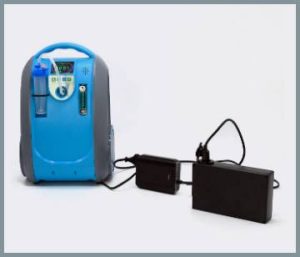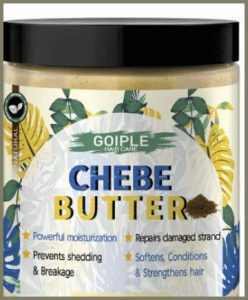If your feet are screaming for relief from dryness and cracks, Kerasal Intensive Foot Repair is your answer. This ointment isn’t just another moisturizer—it’s a game-changer that delivers visible results in just one day. With powerful ingredients like salicylic acid and urea, it tackles rough heels and restores softness like nothing else I’ve tried. Trust me, your feet will thank you. Whether you’re battling calluses or just want smoother soles, grab this 1-ounce tube and feel the difference overnight. Don’t wait—your feet deserve this spa-like treatment now!
My Journey with Kerasal Intensive Foot Repair
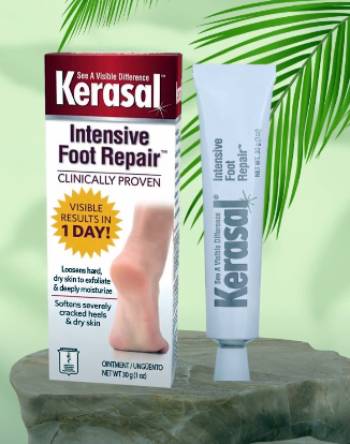
Let me paint you a picture: my feet were a disaster. Years of neglecting proper foot care left my heels cracked, dry, and downright embarrassing. They’d catch on my bedsheets, snag my socks, and make me dread sandal season. I’d tried every lotion under the sun, but nothing worked. Then, I stumbled across Kerasal Intensive Foot Repair, and let me tell you, it’s been a revelation.
The first night I used it, I was skeptical. The tube is small, but the ointment is thick and rich, so a little goes a long way. I massaged it into my clean, dry feet, focusing on my heels, which looked like a desert floor. The texture is dense but not greasy, sinking in without leaving a sticky mess. I slipped on cotton socks—something I usually hate—and went to bed. By morning, my heels were noticeably softer. Not perfect, but the cracks were less angry, and the roughness had dialed down a notch. I was hooked.
Over the next few days, I made it part of my nightly routine. Shower, dry my feet, apply Kerasal, and sock up for a couple of hours. By day three, the cracks were nearly gone, and my heels felt like they belonged to someone who actually cared about their feet. Even the thick calluses on my big toes started to soften. The best part? It didn’t just mask the problem—it felt like my skin was healing from the inside out. Now, I’m a believer, and my feet are finally ready for their close-up.
Maintenance Tips for Keeping Your Feet Soft and Healthy
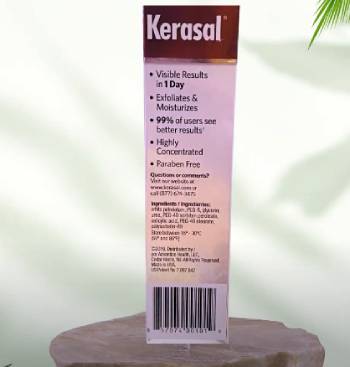
Keeping your feet in top shape doesn’t stop with applying Kerasal. Here’s how I maintain that baby-soft feel:
- Daily Application Routine: Make Kerasal part of your nightly ritual. After a shower, dry your feet thoroughly, then massage a pea-sized amount into problem areas. Focus on heels, toes, and calluses. Pop on cotton socks for a couple of hours to lock in the moisture. Consistency is key—daily use prevents dryness from creeping back, especially in dry seasons. If you’re short on time, even a quick application before bed works wonders. Just don’t skip it, or you’ll be back to square one.
- Exfoliate Regularly: Exfoliation helps Kerasal work better. Once a week, use a pumice stone or foot file in the shower to slough off dead skin. Don’t go overboard—gentle is best to avoid irritation. I buff my heels and toes lightly, then apply Kerasal right after. This combo keeps calluses at bay and lets the ointment penetrate deeper. If you’ve got thick calluses, a pedicure tool can help, but be gentle to avoid cuts that could get infected.
- Stay Hydrated and Moisturized: Dry feet often come from dehydrated skin, so drink plenty of water daily. I aim for eight glasses, and it makes a difference. Also, layer a lightweight lotion like Vanicream over Kerasal during the day for extra hydration. This keeps your skin supple between Kerasal applications. Avoid hot showers, as they strip moisture—lukewarm water is your friend. If you live in a dry climate, a humidifier in your bedroom can help keep your skin from drying out overnight.
- Wear Proper Footwear: Shoes matter. Tight or poorly fitting shoes can cause calluses and worsen cracks. I switched to supportive sneakers with breathable materials, and my feet are happier. Avoid going barefoot on hard surfaces, as it toughens your skin. At home, wear soft slippers to cushion your soles. If you’re prone to sweaty feet, change socks often to keep them dry—moisture can make cracks worse. Proper footwear complements Kerasal’s work and keeps your feet comfy.
The Pros and Cons of Kerasal Intensive Foot Repair
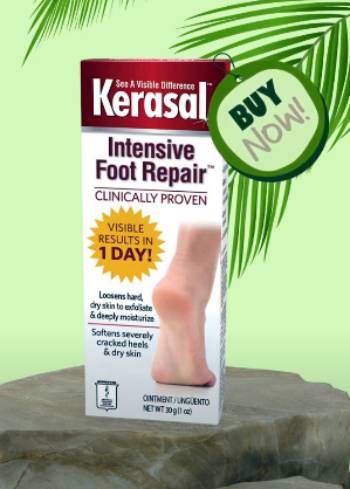
Pros:
Kerasal isn’t just hype—it’s backed by science and real results. Here’s why it’s become my go-to foot care product:
- Fast-Acting Results: The claim of visible results in one day isn’t a gimmick. After my first application, my heels were softer, and the cracks were less pronounced. By day three, my feet were transformed.
- Powerful Ingredients: Salicylic acid exfoliates dead skin, urea hydrates deeply, and soft white petrolatum locks in moisture. This trio doesn’t mess around—it repairs while keeping your skin soft for hours.
- Non-Greasy Formula: Unlike some foot creams that leave your feet slippery, Kerasal absorbs well. It’s thick but not heavy, so you won’t slide around in your socks.
- American Podiatric Medical Association Approval: Knowing podiatrists back this product gives me confidence. It’s not just a cosmetic fix—it’s designed for real skin repair.
- Versatile Use: It’s not just for heels. I’ve used it on calluses and rough patches around my toes, and it works wonders everywhere.
Cons:
No product is perfect, and Kerasal has a few quirks you should know about:
- Small Tube Size: The 1-ounce tube feels tiny for the price. If you’re slathering it on both feet daily, you’ll burn through it in a couple of weeks. I wish they offered a larger option.
- Requires Consistency: While it works fast, you need to keep using it to maintain results. If you slack off, dryness can creep back, especially in winter.
- No Scent in Regular Version: The standard formula is odorless, which is great for sensitive noses but lacks the spa-like vibe of the Nighttime version’s lavender and chamomile scent.
- Potential Sensitivity: The salicylic acid can irritate sensitive skin, especially if overused. I haven’t had issues, but you’ll want to start slow if your skin is prone to reactions.
- Packaging Issues: The tube’s cap can be tricky to open, and I’ve heard some folks complain about leaks during travel. I keep mine in a ziplock when I’m on the go.
Also Read: My Experience With Foottopia Foot Massager
Kerasal Intensive Foot Repair Vs. Other Brands
- Kerasal Intensive Foot Repair Vs. O’Keeffe’s for Healthy Feet
O’Keeffe’s for Healthy Feet is a popular choice for dry feet, and I’ve given it a whirl. It’s a solid moisturizer with allantoin and glycerin, which hydrate well, but it lacks the exfoliating punch of Kerasal’s salicylic acid. O’Keeffe’s feels lighter and absorbs faster, making it great for daytime use, but it took longer—about a week—to soften my cracked heels. Kerasal’s targeted repair approach outshines O’Keeffe’s for severe dryness, though O’Keeffe’s larger jar is a better value for daily maintenance. If you need quick results, Kerasal wins; for mild dryness, O’Keeffe’s is a strong contender.
- Kerasal Intensive Foot Repair Vs. CeraVe Renewing SA Foot Cream
CeraVe’s Renewing SA Foot Cream also uses salicylic acid and ceramides to tackle rough feet. I found it effective for softening calluses, but its thinner texture didn’t hydrate as deeply as Kerasal. CeraVe’s formula is fragrance-free and gentle, ideal for sensitive skin, but it took about five days to see noticeable improvements in my cracks. Kerasal’s thicker ointment and higher urea concentration make repair faster. CeraVe is great for mild roughness, but Kerasal is the heavy hitter for severe cracks and calluses.
- Kerasal Intensive Foot Repair Vs. Burt’s Bees Coconut Foot Cream
Burt’s Bees Coconut Foot Cream is a natural option with coconut oil and peppermint. I loved its refreshing scent and creamy texture, but it’s more about pampering than repairing. It hydrated my feet well, but my cracked heels barely improved after a week. Kerasal’s exfoliating ingredients make it far more effective for serious dryness. Burt’s Bees is perfect for a spa-like treat and daily moisture, but it can’t match Kerasal’s healing power. If you want soft feet without cracks, Kerasal is the better pick.
- Kerasal Intensive Foot Repair Vs. Vaseline Petroleum Jelly
Vaseline is the budget king for moisture, and I’ve slathered it on my feet before. It locks in hydration like nobody’s business, especially with socks overnight, but it doesn’t exfoliate or repair. My cracks stayed put, and the greasy feel was a hassle. Kerasal’s targeted formula with urea and salicylic acid actually heals, not just coats. Vaseline is dirt cheap and great for maintenance, but for transforming rough feet, Kerasal is leagues ahead. It’s worth the extra bucks for real results.
- Kerasal Intensive Foot Repair Vs. Flexitol Heel Balm
Flexitol Heel Balm boasts 25% urea, which sounded promising, and I gave it a shot. It’s thick and hydrating, but the results were slower than Kerasal—about a week for softer heels. Flexitol’s formula is solid for moderate dryness, but Kerasal’s salicylic acid gives it an edge for exfoliating tough calluses. Flexitol’s scent is medicinal, which isn’t my favorite, while Kerasal’s odorless formula is more pleasant. For fast, dramatic repair, Kerasal takes the crown, though Flexitol is a decent alternative.
Also Read: My Experience With Shiatsu Foot Massager
Frequently Asked Questions (FAQs)
Kerasal Intensive Foot Repair lives up to its one-day claim. After my first application, my heels were noticeably softer, and cracks started closing up by day three. For severe dryness or thick calluses, expect a week of daily use for dramatic results. Consistency is crucial—skip a few days, and progress slows. Most users see improvements within 1-3 days, but keep at it for lasting softness.
Kerasal is generally safe, but salicylic acid can cause irritation for sensitive skin. I didn’t experience issues, but some report redness or stinging if overused. Avoid applying it to open wounds or infected skin, as it could burn. If you notice discomfort or a rash, stop using it and consult a doctor. Always patch-test if you’re prone to reactions, and keep it away from your eyes.
I use Kerasal daily, usually at night, and it’s perfect for maintenance. The instructions recommend daily application, massaging it into clean, dry feet. For faster results, wear socks after applying. You can use it twice daily if your feet are extra dry, but I find once is enough. Don’t overdo it—too much salicylic acid might irritate. Stick to daily use for best results without issues.
Absolutely, Kerasal is a cracked heel superstar. My heels went from rough and split to smooth in days. The salicylic acid exfoliates dead skin, while urea and petrolatum hydrate and heal. Users rave about its ability to close cracks and soften tough skin. For deep cracks, use it daily with socks for a week, and you’ll see a huge difference. It’s podiatrist-approved for a reason.
Final Thoughts
Kerasal Intensive Foot Repair is a must-have for anyone with dry, cracked feet. Its powerful formula delivers results in just one day, transforming rough soles into soft, healthy skin. From my own experience, it’s outperformed every other product I’ve tried. Whether you’re prepping for sandal season or just want comfy feet, this ointment is worth every penny. Don’t let cracked heels hold you back—grab Kerasal, slather it on, and step into smoother days!

